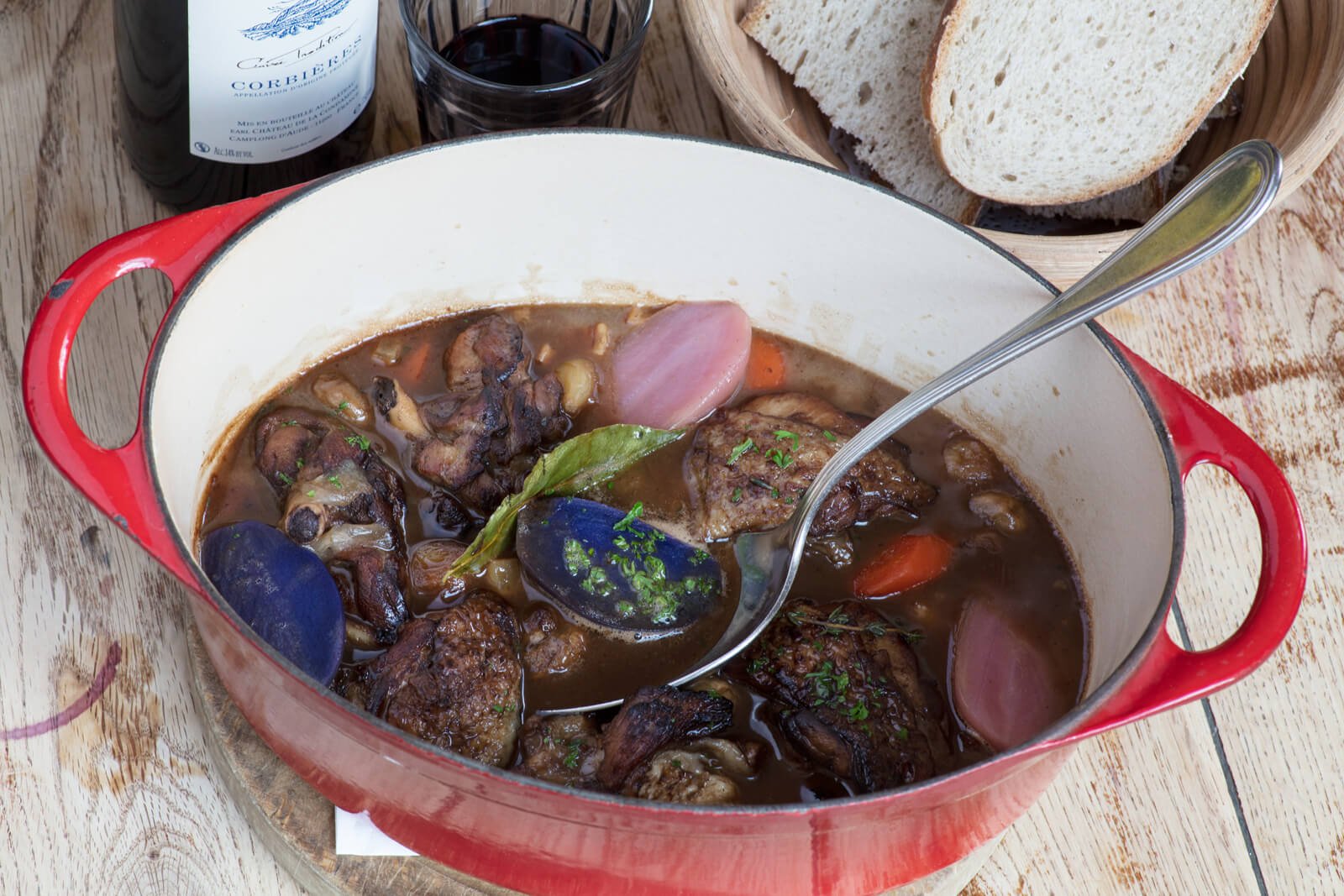Fashions fade
As always, at the start of each year magazines, newspapers and blogs devote a large amount of space to the hot new culinary trends for the coming year. What will be this year's quinoa? Is kale still fashionable? Are amaranth smoothies the new charred leek? It makes me smile. Predicting annual food trends may make for a quick, amusing read but these fads and fashions have little to do with good food.
We don't pay much attention to trends in the Escargot kitchens. My cooking is founded on classic French dishes made with the best Scottish produce that I can find. Our dishes are based on tried and tested culinary traditions. From Boeuf Bourguignon to Coq au Vin; I like to cook dishes that have pedigree and their own heritage.
That doesn't mean that these recipes are set in stone. Things move on and change can be good. After all, twists and tweaks can evolve a dish. For example, I might make Coq au Vin using local beer rather than wine, or use venison and beef cheeks to make Boeuf Bourguignon. The point is that those changes are made within the framework of the recipe's heritage. I don't try to reinvent the dish. If I tweak a dish then I do it with respect, I don't do it simply for the sake of novelty or to incorporate an ingredient that has been hailed as the new flavour of the month.
Good cooking is not about following trends. However, some of the fundamental truths of good cooking have become fashionable. Seasonality and sustainability have become buzzwords over the last few years. This is good news. I'm delighted that they have moved up the restaurant agenda. However, I do wonder if this zeal for seasonality and sustainability will last or be cast aside when a new trend emerges.
Seasonality is not a box you tick simply because you want to be seen as being on trend. It is one of the founding principles of cooking and eating well. Good kitchens have always worked with the seasons. In the days before we had refrigeration and before we imported produce from far away countries, chefs cooked seasonal ingredients because that is what was to hand. It made good sense then and it is the best option now - even if we do have the opportunity to eat Kenyan asparagus in January.
When you eat seasonally, you eat ingredients when they are at their best. When they reach their peak, they are also at their most abundant and that means they will be at their best price. Eating seasonally is eating economically and that applies to both restaurant and domestic kitchens. Perhaps more importantly, there is a simple yet great pleasure to be had in anticipating the first strawberry or chanterelle of the season. That pleasure is lost if these ingredients are available all year round. We become blasé about them.
Sustainability has become another marketing point for restaurants, and rightly so! Sustainability is important but it is not a 21st century invention. One aspect of sustainability in restaurants is extracting the maximum from all the products used in the kitchen. Everyone has heard about nose to tail eating. This year, root to stem eating is being hawked as a hot new trend and we are all being encouraged to eat the parts of plants that are normally discarded.
This is a very sensible idea, which we should encourage, but it is not a dazzling new revelation. In the early 80’s, I was in my early teens doing an apprenticeship at a restaurant in Saint-Maure-de-Touraine. The chef patron of the restaurant bar was an old school chef. This had advantages, but let's just say that he would have been baffled by contemporary concepts such as dignity at work.
For all of his character defects, he knew how to extract every last drop of flavour - and value - from his ingredients. The waste bin in that kitchen was seldom well fed. Potato peelings body-swerved the bin and they never reached the compost heap. Instead, they were deep-fried, salted and sold as very more-ish bar snacks to grateful drinkers. In many kitchens, those peelings would have been binned. The old school chef was savvy enough to use everything he could and was canny at turning potential discards into desirable dishes.
He would have raised an eyebrow at the idea of food trends. Food fashions were about as important to him as Parisian catwalk fashions. He would have been stumped by questions about his sustainability practices and amused at the idea that restaurants would pay big money for imported, out of season ingredients. And yet he practised seasonal cooking, operated a finely tuned waste reduction system and sourced all of his ingredients from local farms or his own garden. And not because it was on trend. He did it because it made sound sense and was integral to cooking well. This was true thirty years ago. It was true three hundred years ago and it remains true now.
Food fashions come and go. By contrast, the basic principles of good cooking may swing in and out of fashion but they have lasting value. Much like my old chef, I know nothing of haute couture but Yves Saint Laurent hit the nail on the head when he said that 'Fashion fades. Style is eternal'. Unlikely as it may seem, there are some happy similarities between the ateliers of the fashion houses and well-run kitchens.

